Violin Learn More
Share
The violin has the following parts:
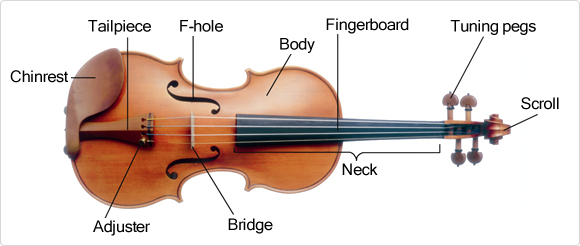
The Structure of the Violin
The structure of the strings
The violin has four strings
From high to low, the strings on the violin are E, A, D, and G. They are made from a variety of materials including catgut (sheep intestine), nylon, and steel.
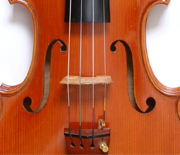
The tuning pegs are used for tuning
The neck is carved from a single piece of wood, and the part at the end that appears to wind in on itself is called the "scroll." The strings are attached to the tuning pegs, which are fitted inside narrowly carved holes, and held in place by friction.
Only the high E string has an adjuster so that it can be easily tuned, while the others rely on the tuning pegs for tuning, which might take some getting used to.
Recently, some violins come with four adjusters built into the tailpiece, so this is another option to consider.
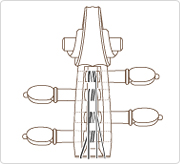
The tuning pegs
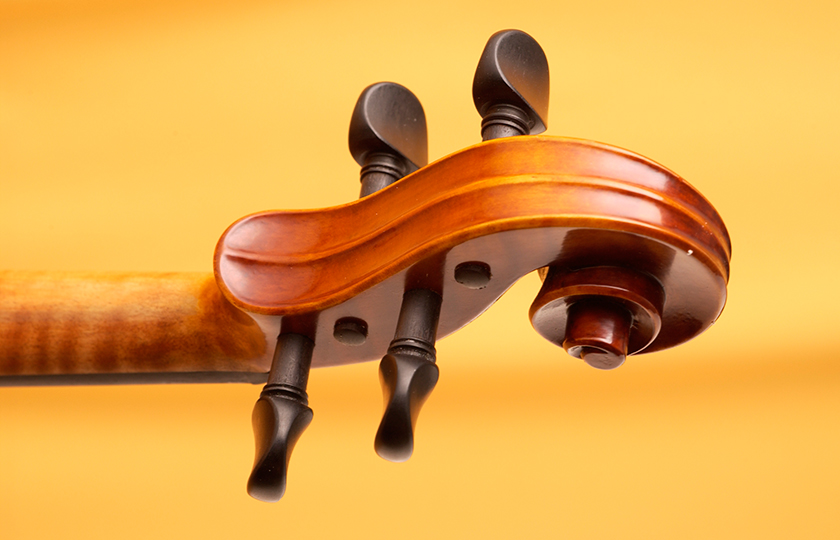
The four strings are attached to the four tuning pegs
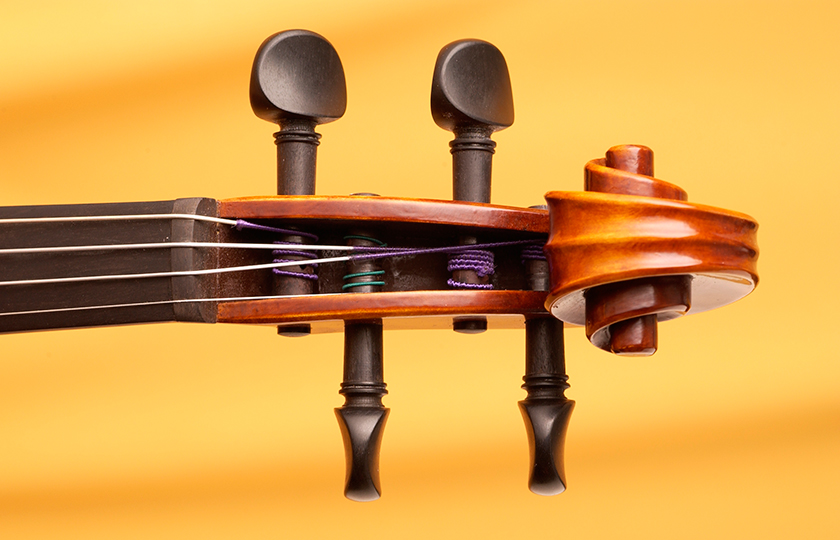
The neck is carved from a single piece of wood, excluding the tuning pegs
The Structure of the Violin
The structure of the bow
Bow hair is made from horse hair
The bow hair is made of a hank of horsehair. A single violin bow will use between 160 and 180 individual hairs. These hairs are all attached next to each to form a ribbon. Unusually thick hairs and kinked hairs are removed so that only straight hairs are used.
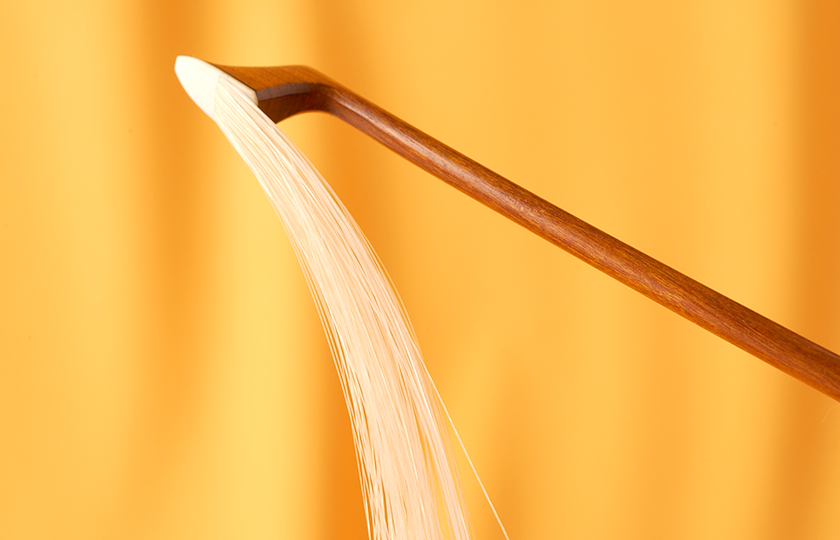
Bow hair made of horsehair

The stick is made out of hardwood
Rosin is used to create friction, and thus sound
Rosin is applied to the bow hair before being used. Rosin is the hardened sap of the pine tree and comes in yellow or black cakes, which produce a white powder when rubbed. Rosin powder is sticky, which helps the bow rub the strings. Let's listen to the sound produced by a bow with rosin, and one without.
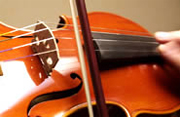
Bruch's Violin Concerto No. 1
With rosin
Without rosin
The Structure of the Violin
How sound is produced
The vibration of the strings produces a spectacular sound
Vibrations from the strings are transmitted to the top plate and bottom plate through the bridge, and this reverberates within the hollow body, producing the rich, brilliant tone characteristic of the violin.
A bowed string vibrates and moves in a circular motion that produces the fundamental tone, while the vibration produces overtones like a rippling wave. This complex movement of the string is transmitted to the body by the bridge. The bridge transmits this vibration to the top plate of the violin through two fundamental movements; one in which it pushes down on the top plate alternately one foot at a time, and the other in which both feet push down on the top plate simultaneously.
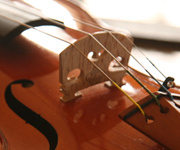
The bridge transmits the vibrations of the strings
There is another small yet important part: the sound post. The sound post is a post sandwiched between the top plate and the bottom plate underneath the bridge, and it transmits the vibrations from the top plate to the bottom plate. It also serves to preserve the shape of the body.
If you look inside a violin, you can see the bass bar running up the left hand side as you face the instrument. The piece sitting under the bridge on the right-hand side is the sound post.
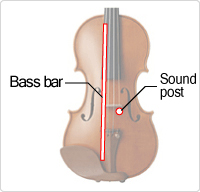
The position of the bass bar and the sound post
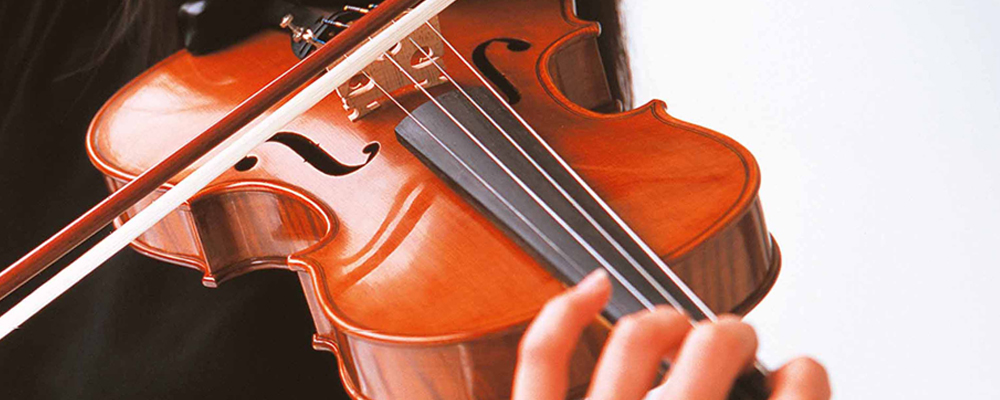
How to Play the Violin
The basic position
How to hold the instrument
The instrument is trapped between the chin and the shoulder to stabilize it. The chinrest was developed in the nineteenth century to support the instrument, and this played a major role in improving playing techniques. Initially, the violin appears to have been held against the chest or the shoulder.
How to hold the bow
The bow is normally held in the right hand. It is pinched between the fingers and should not be squeezed too tightly. The way the bow is moved, calling "bowing," determines the length, volume, tone, and other characteristics of the note.
The left hand
The neck is held lightly around the thick of the thumb and the base of the index finger. The strings are pressed down by the other four fingers. Unlike the guitar, the violin does not have any frets, so if the angle at which the finger meets the string is even slightly off, the finger will slip.
